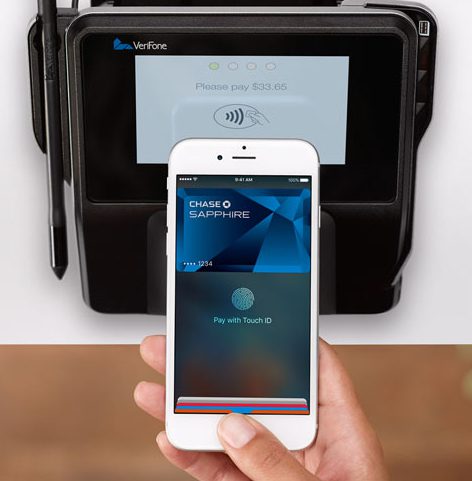Everything you need to know about Apple Pay
We know Apple phones are fun, versatile and a little fragile (we won’t talk about that your iPhone screen repair that you need to sort out, for the third time) but they also offer amazing features that enhance what you can do on a day to day basis, and Apple Pay is just one of these.

Introduced in July 2015, Apple Pay allows iPhone users to pay immediately at certain retailers by simply holding their phone up to the machine and pay using contactless, saving time, hassle and having to remember pin numbers. Only certain UK banks worked with the system at first but more and more are signing up, although Barclays won’t be offering the service until early 2016 much to the horror of its customers.
Apple Pay works by simply linking the service up to your bank account, allowing you to seamlessly make purchases while out and about and those with newer handsets can also use the Touch ID function to make payments even more secure. The service is available in more than 250,000 shops now, meaning you could leave your wallet at home and just use your phone (or your Apple watch if you own one) to make most of your purchases, it’s a service that is showing us a glimpse of the future. Here’s a list of where Apple Pay can be used at the moment.
Payments using Apple Pay are capped at £20, so its best to use when grabbing that morning coffee on the way into work or when you pop into the supermarket for milk on the way home. However, some establishments are accepting larger payments via Apple Pay, including Bill’s restaurants and Pret.
The service is great for those living in London, as it can be used to pay for trips on the tube in the same way an Oyster card – just be sure you have enough battery while making your trip because if your device runs out before your reach your end destination and you can’t touch out, then you could be charged the maximum fee (which can be as much as £8.80).
Apple Pay uses the near field communication chips already in your iPhone 6 and above and Apple Watch to pay when you hold your device near a card reader – in the same way you would when using a contactless debit card. It’s a quicker, more streamlined way of making purchases with just a single touch. Apple Pay is activated by simply approaching a card reader, so there is no need to open an app, and then your phone or watch will vibrate to let you know the payment has been sent.
Apple Pay doesn’t work with any devices lower than an iPhone 6 because older devices don’t have the near field communication chips that are required. Setting up Apple Pay is an easy task, by simply linking the service up to your Wallet – which can store your debit or credit card and uses the card loaded onto your iTunes account for the Apple Pay service –you can then use these linked cards to pay for purchases in store via your mobile.
The service is the way forward when it comes to contactless technology, allowing you to seamlessly integrate your tech into your everyday life, companies such as Samsung and Microsoft will more than likely look into their own versions of Apple Pay on their Android systems to keep up but for now it looks like iPhone 6s and above are the only way to go!

